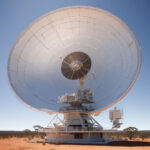Biggest Black Hole Merger Ever Sends 225 Suns’ Worth of Ripples Through Space
Earth-based LIGO observatories have detected the most massive black hole smashup ever via gravitational waves. This groundbreaking discovery has unveiled a cosmic event of immense proportions, showcasing the sheer power and spectacle of the universe. The collision, which occurred a mind-boggling 7 billion years ago, involved two black holes, with one being 85 times more massive than our sun and the other 66 times more massive. The resulting merged black hole now weighs a staggering 142 times the mass of the sun, emitting gravitational waves equivalent to 225 suns’ worth of energy.
The detection of this colossal black hole merger not only provides further evidence of the existence of these enigmatic entities but also offers a glimpse into the extreme phenomena that shape the cosmos. Scientists have long been fascinated by black holes due to their mysterious nature, where gravity is so intense that nothing, not even light, can escape their grasp. The merging of two black holes, a rare and awe-inspiring event, releases an immense amount of energy in the form of gravitational waves, creating ripples in the fabric of spacetime that travel across the universe at the speed of light.
The observation of such a massive black hole merger is a testament to the incredible advancements in technology and human knowledge that have made it possible. The Laser Interferometer Gravitational-Wave Observatory (LIGO), consisting of detectors in the United States, played a pivotal role in capturing these elusive gravitational waves. By precisely measuring the tiny distortions in spacetime caused by the black hole merger, scientists were able to confirm the existence of this cosmic event and study its implications.
One of the most intriguing aspects of this discovery is the sheer scale of the merged black hole, surpassing any previously observed in terms of mass. This giant black hole, formed from the union of its two predecessors, represents a new class of astronomical objects that push the boundaries of our understanding of the universe. The data gathered from this event will undoubtedly fuel further research and exploration into the dynamics of black hole mergers and their role in shaping the cosmos.
Beyond the scientific implications, the detection of such a monumental black hole merger serves as a reminder of the vastness and complexity of the universe we inhabit. It highlights the beauty and violence of the natural world, where celestial bodies thousands of light-years away can influence the very fabric of spacetime on Earth. The study of black holes and gravitational waves not only deepens our knowledge of the cosmos but also sparks wonder and curiosity about the mysteries that lie beyond our planet.
In conclusion, the discovery of the largest black hole merger to date marks a significant milestone in astrophysics, opening new doors to understanding the fundamental forces that govern the universe. This cosmic event, with its 225 suns’ worth of energy released in gravitational waves, stands as a testament to human ingenuity and the relentless pursuit of knowledge about the cosmos. As we continue to unravel the mysteries of the universe, each new discovery brings us closer to unlocking the secrets of the cosmos and our place within it.
black hole, merger, gravitational waves, LIGO observatories, astrophysics











